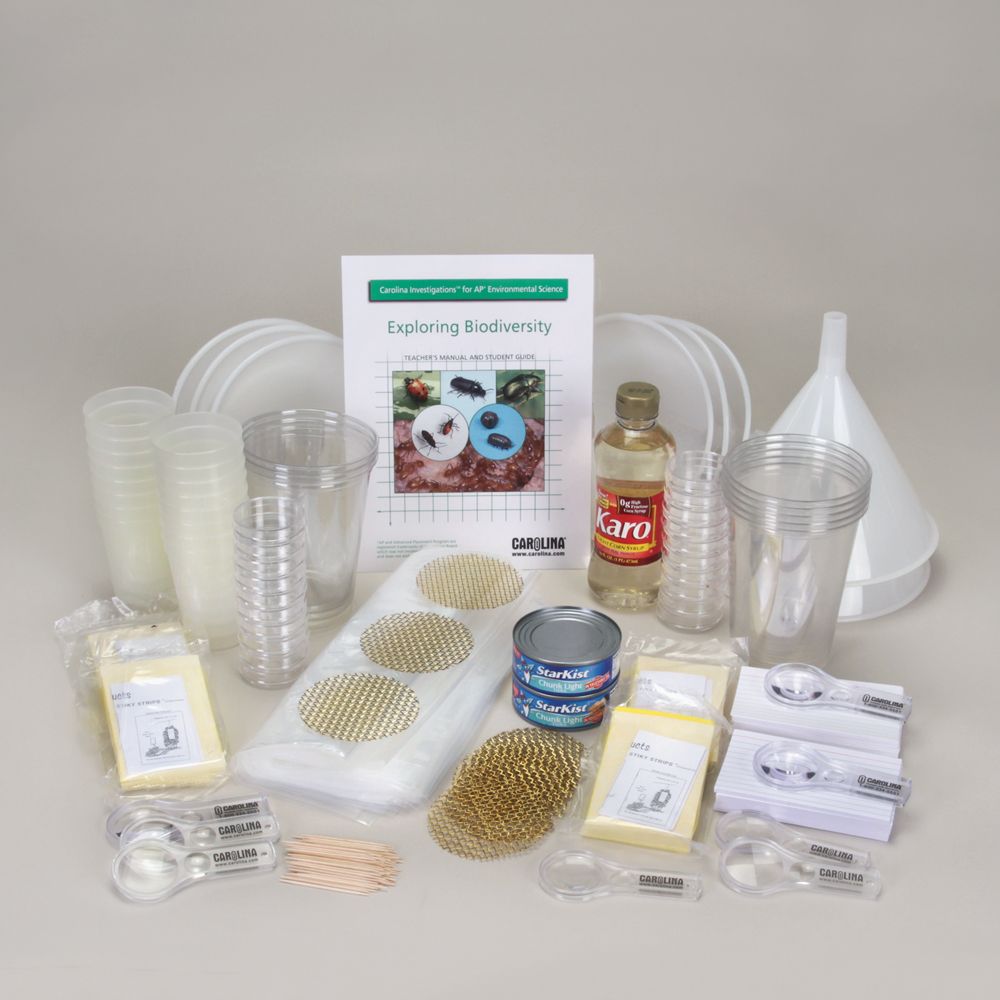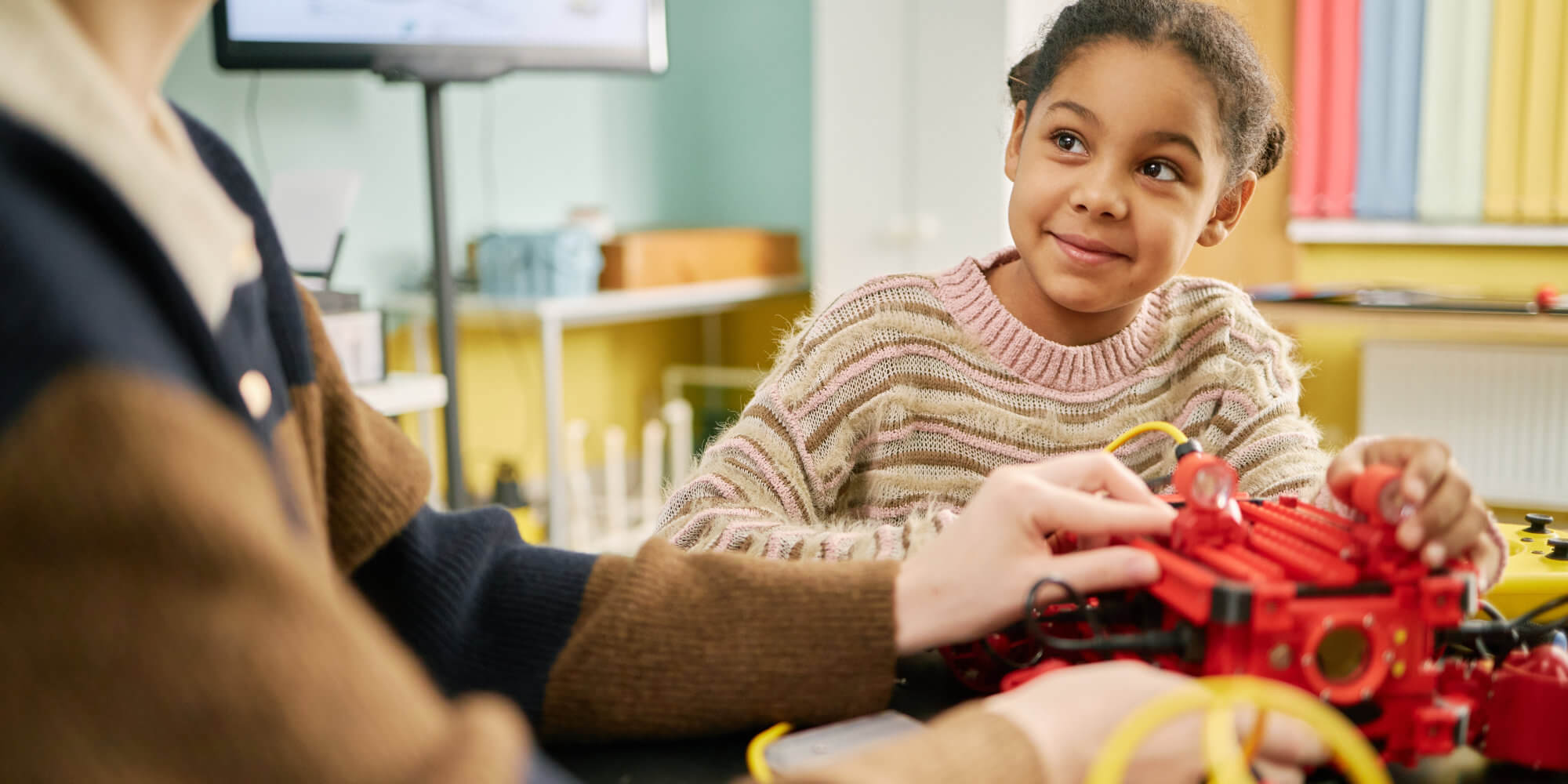Invertebrate Biodiversity with Berlese Funnels
A Carolina EssentialsTM Investigation

Total Time: 5 days
Prep: 1 hour | Activity: 5 days

Life Science
6-12
Middle/High School
- Total Time: 5 days [ Prep: 1 hr | Activity: 5 days ]
- Subject: Life Science
- Grade: Middle and High School
Overview
Understanding the relationships among biotic diversity and abiotic factors in an ecosystem can be a difficult task. Using soil invertebrates, students can identify both the number of species present in a soil sample and the number of individuals within a species. With some simple math, the density of invertebrates in a plot can be calculated. Students will construct a simple and inexpensive Berlese funnel to collect soil invertebrates and then identify them.
Essential Question
How can the biodiversity and density of soil invertebrates be studied?
Investigation Objectives
- Construct a Berlese funnel.
- Collect and identify soil invertebrates.
- Calculate the density of soil invertebrates.
Next Generation Science Standards* (NGSS)
SCIENCE & ENGINEERING PRACTICES
Constructing Explanations
- Students will collect invertebrate samples and explain the results based on abiotic soil factors.
DISCIPLINARY CORE IDEA
LLS2 Ecosystems: Interactions, Energy, and Dynamics ESS2 Earth’s Systems
- Students will understand the relationship between ecosystem biotic and abiotic factors.
CROSSCUTTING CONCEPTS
Patterns
- Students will establish patterns between soil invertebrate biodiversity and density and abiotic soil factors.
Materials
- Ethanol (70–95%) or isopropyl alcohol (70%), 50 to 100 mL
- 1 1-gallon plastic jug with cap
- 1 1000-mL beaker or quart jar
- Square of mesh screen, 20 cm × 20 cm (1/4 in hardware cloth)
- 1 incandescent bulb (60 or 75 watt)
- 1 scissors
- 1 ruler
- Tape
- 1 soil sample per group from a plot that is 50 cm × 50 cm
- 1 spade, shovel, or other digging tool per student
- 1 or 2 invertebrate keys
Safety & Disposal
Remind students to use scissors properly. Identify students who may have allergies to bug bites, insect stings, plants, or pollen. Take necessary precautions.
Return excess soil outside. Once invertebrates are identified, flush alcohol down the sink with water. Dispose of invertebrates in the trash.
Procedures
Berlese Funnel Construction
- 1. Precut the screen into 20 cm × 20 cm pieces.
- 2. Identify different locations outside that are suitable for invertebrate collection.
STUDENT PROCEDURES
- Using scissors, cut the bottom off the jug.
- Tape around the edge of the cut end.
- Place the milk jug spout in the mouth of the jar. The jug serves as the funnel. The jar is the collection chamber
- Bend the mesh screen so that it fits securely into the milk jug and forms a stable platform for the soil sample. Do not let the screen fall below the handle.
- At the assigned location, collect about a cup of soil and leaf litter (the top 1 cm).
- Place the top layer of soil into the funnel.
- Pour 2 cm of alcohol into the beaker or jar.
- Place the funnel on the jar. Tape a ruler or similar support to the handle of the funnel and to the side of the jar to ensure that the funnel remains steady.
- Place the Berlese funnel under the incandescent lamp
- Adjust the lamp to direct the light onto the top of the sample from about 20 cm away
- Let the Berlese funnel stay under the light for several days
- Identify the soil invertebrates that have fallen into the alcohol.
TEACHER PREPARATION AND TIPS
- Make sure that the tape is folded over the cut edge of the milk jug.
- Keep the cap on the jug until the soil is added to prevent any loose soil from entering the jar.
- Do not pack the soil into the funnel.
- Remove the jug cap.
- The incandescent bulb serves as a heat source.
- There are many online invertebrate keys for students to use to ID animals
Data and Observations
Identify and record the type and number of invertebrates in the soil sample.
Typical invertebrates may include ants, mites, spiders, springtails, termites, and centipedes.
Analysis & Discussion
Calculate invertebrate density.
Density = total number of animals/area (50 cm × 50 cm)
Compare group results and discuss differences in samples and locations.
Answers will vary.
SHOP THE KIT
REFERENCE KITS
HELPFUL LINKS
VIEW MORE ESSENTIALS
*Next Generation Science Standards® is a registered trademark of Achieve. Neither Achieve nor the lead states and partners that developed the Next Generation Science Standards were involved in the production of, and do not endorse, these products.




